how can I make concrete molds ?
Is there any info on making concrete molds ? I was wondering about taking a stuffed animal and spraying it with a rubber type solution ( is there such a thing? )or almost anything that could be sprayed all over like a coating and after the coating stuff drys I would like to peel or cut it off for use as a mold that I could fill with lite weight concrete,or something .
can anyone help with this ?
Thank You
Comments (57)
xcaret
Original Author20 years agoThanks everbody for the advise .I didnt know latex would pick all the tiny detail up .I have learned a lot since my post
bodiCA
20 years agoOh, yes, you are correct, that didn't make sense. I am brushing 'decoupage' on one side of my large rhubarb leaves, after they turn the beautiful red/brown color, to preserve the leaves for molds to make concrete leaves. They are beautiful to enjoy while they wait, and my objective, prevent the leaves from dry brittle fragility. They are remaining flexable enough to curve for the depth of the concrete steps I want.I am waiting for a leaf to color, and will decoupage it, still on the plant and see if I can preserve the true shape of the leaf even more. Is this making any sense? I am very pleased with the results so far!
Related Professionals
Cary Landscape Architects & Landscape Designers · Cottonwood Landscape Architects & Landscape Designers · Bedford Heights Landscape Contractors · Huntley Landscape Contractors · Kailua Landscape Contractors · Kaysville Landscape Contractors · Longmont Landscape Contractors · St. Louis Landscape Contractors · Chicago Ridge Landscape Contractors · Cherry Hill Siding & Exteriors · Colorado Springs Siding & Exteriors · Destin Siding & Exteriors · Enfield Siding & Exteriors · West Hempstead Siding & Exteriors · Wheeling Siding & ExteriorsbodiCA
20 years agoUpdate;
All my decoupage preserved leaves are still beautiful and flexable. The ones I preserved with shellac are not terrible, but more fragile than the decoupage, and they are still new. The first decoupage leaf is several months old and still lovely for when I attempt to make a group of molds.
Has anyone else tried this?Belgianpup
20 years agoBodiCA, could you explain exactly what you are doing? Are you coating the leaves with glue, or what? I have some perfect rhubarb leaves right now & this sounds perfect for them.
Do you live in Bodi?
Sue
ianna
20 years agoI would like to give this liquid latex a try. When choosing such a product can you suggest what strength to select? I gather I would need something that can remain flexible in order for me to peel back the rubber coating. I'd like to be able to pick up details from a sea shells for example or the footprints of my little one.
Ianna
Belgianpup
20 years agoI have used a latex product called Mold Builder from ETI in Fields Landing, CA 707-443-9323. I just got it off the bottle, don't know if they have a website.
Tip: Brush on a couple layers of the latex rubber, letting dry between layers (time doesn't seem to matter). Then brush on another layer, & lay cheesecloth or plain rolled woven cotton bandage material (can be tricky to find -- ask your vet or doctor) into this WET layer, carefully pressing or lightly brushing it to embed it into the wet latex. Cover the cheesecloth/bandage material with several more layers of latex. More is better & stronger.
I haven't done this for quite a while, but I remember the latex can be strengthened with heat. I THINK you can put the finished mold in a large vat of hot water, or there are other ways. There's more info somewhere. I'm pretty sure it's called "vulcanizing".
Sue
ianna
20 years agoI recently visited an art supply store that sold a latex product however I learned this wasn't compatible with children. It may contain substances that could be harmful to children. However they did suggest I explore that compound (the name escapes me for the moment) that dentists used to prepare teeth molds and the same type used for making masks and the likes.. I haven't checked it out yet, but thought I'd pass on this piece of info. Just in case there are folks out there who'd like to take imprints of their little ones.
Ianna
leigh_wi
20 years agoThe dental molding material is called alginate. Another "body casting" material that is safe is moulage. Both of these are available at:
http://www.artstuf.com
They seem to have the better prices in my limited search. I have not tried either so far but plan to over the winter months. The moulage is especially interesting to me because it is suppose to be reusable. However, in reading the recommended casting materials, they suggest the heaviest to use is plaster of paris. Has anyone used this yet? I'll give it a try with HT and if it doesn't work, I do plaster of paris then do a latex mold of that. I'm looking to do face castings of my daughters to use in centers of leafmen or windman type castings and want to pick up a lot of detail so they will be keepsakes for them.Belgianpup
20 years agoJust be SURE to rub Vasoline into the faces of your kids as a mold release, and around the hairline before you apply plaster or anything else. And leave the nose holes. Funny how some people forget these two important things!
neetsiepie
20 years agoPlaster of Paris heats up and can cause burns. There is a specific type that can be used for body casting...don't get the stuff they sell at home improvement stores if you're going to cast body part!
Latex on skin can cause reactions too...it's got a lot of ammonia in the mix. There are some latexes that can be used on skin, I'd do a search for latex mold material and read their specs. My uncle works in special effects in Hollywood and his colleagues do a lot of body casting...there are lots of web sites devoted to materials for that use. Unfortunately, the stuff is not very cheap, but for a keepsake item, it would be worth the cost.
bodiCA
20 years agoHi All, just a little update;
the rhubarb leaves coated with Royal Coat Decoupage are still lovely and flexable, many months later. However, the leaves I shellaced, are brittle, dry and not at all flexable. My objective was to preserve lots of leaves and then take a day to make lots of molds or leaf stones, so the decoupage is a huge winner in my opinion. I can curve my flexable leaves to create any thickness I like. Please try this, and let me know what you experence. Thanks!leigh_wi
20 years agobodiCA,
Posted this on the tiny bubbles thread as well,please go into detail on how you are decoupaging leaves, if I remember right, decoupage is a 50/50 mix of white glue and water? Are you doing it to still planted leaves or cut them then decoupage? Both sides? We're getting near the end of growing season and all idea's on preservation are needed!
Maybe we should move this thread to hypertufa or link it, I'm sure all the posters there would enjoy this one too!
Thanks,
Leighdesiderata
20 years agovery interessting....I was in a course of study at the Art Institute of Seattle, in 93' and one of the classes was 'sculpture'. We were instructed in the use of all of the above mentioned materials. Alginate, a very good source, though a bit expensive, for fine detail. Liquid latex, easy to use, and need to do one layer at a time, for a good buildup and for best detail. I had a very creative man, who taught me the art of making special effects make-up, when we did zombies for a haunted house. The teenagers were more than willing to be the 'victims', while we applied the liquid latex on their faces. Some of the kids did have reactions and had a sunburned looking face, for about a day afterwards. We were careful to comb back their hair and put vasaline on any part, like eyebrows, upperlip, around the eyes, or wherever we knew it would be extra sensitive. when the liquid latex was on them and it had a chance to dry, it started to shrink, giving them the look of aged, decomposed skin. Then came the fun....putting on the make up. The dark colors, to make their eyes seem to sink, into their faces.....
Another material, is a craft roll of plaster, like a dr. would put on a cast, for a broken leg. If you know an orthopedic dr. personally, then the supplies are readily available, otherwise, it's the craft store that has it in rolls for under $5.
I made molds, by buying 25 pounds of clay in a bag (much cheaper that way) for about $7. create what you want and you can save clay and keep it lighter by making a base of crumpled tin foil and chicken wire, for the armature. Then mold the clay around it. If it's only for mold making, that's enough, to let it dry and make a mold form around it. That's where the book that Irish Hermit suggested, would be extremely helpful. I believe you can request it at the library. I have a copy of it, so haven't had to search.
To back up, though, is to review your original question and that was for making a cement mold. What exactly, in cement are you wanting to make? The troughs, for planting? Like in hypertufa? or steps, or blocks? that would make a hugh difference, as far as just what kind of a mold you're after. I'd guess if you're after something similar to what you can buy at HD, but want to keep the cost down, then that's a bunch more simple. You'd need a hammer, saw, wood, cut to lengths you choose, bags of cement, a hose and lots of space to spread out. You could create a yard of tiles, Mexican style, ready to construct a house, if you wanted. Let them sun dry, in rows, till they've cured and it's time to build.Becky,~~~aka~~~strawberrygoat
bodiCA
20 years agoI can see how your jewlery would be fabulous, I was thrilled how beautiful my decoupage water lilly pad turned out, and my silver frog looks incredible on it. Really one of a kind jewlery!
eva1429
20 years agoHi, Everyone,
Becky (strawberrygoat) -- Could you recommend a brand of clay? I'm interested in buying 25 pounds of clay for under $10 to play around with. Also, do you have any idea what kind of clay would be needed to do what the artist at the website below did: carved the designs in reverse in clay and then used the clay mold to do the casting. Would the clay "mold" have to be fired?
Thanks,
EvaHere is a link that might be useful: Bearded-face Fireplace Surround Cast in Clay Mold
desiderata
20 years agoeva~~~I have good news and I have not so good news~~~
good news is, that you can get ahold of clay, somehow, somewhere, but being in IL., I can't direct you, other than to give you info, for a number for the store, that is local to me.
The not so good news, is that the clay I use, Portland Red, is manufactured here in Tacoma and sold around the West Coast and I don't know how far east. You'll need a terra cotta clay and if you check any art supply warehouse, they'll know where it would be, for that many pounds, to keep the cost down for you. It'll need to be fired, in the cone 4 to cone 6 area, for stability and strength. There you could find someone who fires bisque dolls or ceramics, in a small shop, instead of going to some large business. Look for a listing in the phone book for someone who makes ceramics at home. Once you get your clay piece done, you'll be making a negative mold, from plaster. Finally, you'll get to the point of being able to put the cement into the mold of choice and end up with what you're after. Lots of steps, lots of mess and even lots more patience! e-mail me and I can give you the # of the supply house I go to. Shipping would be cost prohibitive, to IL. but you'd get some name brands, for your search. Hope to hear from youBecky
eva1429
20 years agoHi, Becky,
Thanks for the great information. I'll look for terra cotta clay locally, because I know shipping charges would be high. Do you know if there are any air dry clays that could be used to make a small carved mold?
Eva
desiderata
20 years agosure there are....called "paper clay" it's a clay, that's used alot for faces, hands and other small detailed work, for dolls, or little animals....check out paper clay art, on a google search....I have that book, too...can't remember the author...it's really good for step by step instructions. It's a guy, who makes the dolls, in it. I know Sculpy makes a clay, too....I think when I was looking around in the beginning, it was google, that had all I could ever read. Have fun......another good source for books and instructions, besides the library, is a used book store...I've saved so much cash, by getting them at a "musty dusty" or "moldy oldy" book store....just love 'em!
Becky~~~
Ditzzy
20 years agoDesiderata, wouldn't the plaster mold need to be coated on its interior with liquid latex or waterseal so the mold could be reusable? I got my local ceramics shop to donate two small molds to my experiment as I wanted to see if this would work.
The only other thing I have read about using plaster molds for cement is that of the crafter using a hammer to break it off or water to dissolve it off which would make it a one-time-use-only mold. That is disappointing.
I also have a (bought as greenware)Greenman face that is at the shop waiting to be glaze-fired with the intention of using IT to create a mold for cement using latex as well or plaster coated with latex. Or would a simple waterseal product work?
Josie
neetsiepie
20 years agoYou can't pour concrete into a plaster mold. The plaster will leach out the water and the concrete will adhere to the plaster. Learned this the hard way years ago.
To do your greenman face you could have it glazed (or sealed well with paint and sealer) then make a very simple flat mold. To do that you make a box (you can even use a cake pan if the piece will fit inside it) and pour in enough latex to sufficient depth to press the face into. Let this dry (a few days depending on depth) and you have a nice mold for casting concrete in.
For flat molds, this is the easiest method. Flat means it's not upright or with a lot of deep undercuts. We use this method for making wall plaques all the time.
Ditzzy
20 years agoI know that concrete needs to keep the moisture in in order to cure while the purpose of using plaster for ceramic slip is to pull the moisture out. That is why I was asking if it would work if I completly sealed the plaster with many many coats of latex inside & out and then used Pam as a release agent?
Thanks for the tip on how to do the greenman face. I'll have to make a trip to the craft store soon : )
Josie
neetsiepie
20 years agoI think that if you coated the plaster with latex, you could practically make the mold from the positive you cast in the plaster mold first. (off the bisque piece) then use the plaster mold as the backing to the latex to keep it from bulging out of shape. Perhaps if you just paint the plaster piece with several coats of a latex based paint...maybe seal it first with a polyurethane, then latex paint...it could work. It's worth a try if you are willing to experiment with a plaster mold.
I would recommend using mineral oil diluted slightly with rubbing alcohol on rubber molds. Vegetable oil (PAM) could get rancid and cause nasty stuff to the rubber. The latex molds we use cost a small fortune so we have to ensure they last! NEVER use any petroleum product around your latex, such as vaseline or motor oil...you'll end up with rubber mush.
Ditzzy
20 years agoGood to know about using PAM on latex (as well as vaseline or motor oil)! Thanks.
Yes, I am willing to experiment on the plaster as these were donated to me by my local ceramic shop. I simply asked them if they had a discard pile for broken molds and they showed me a pile of good discards and let me choose two small ones.
I just bought a 16 oz. jar of rubber latex ($10...Jeez!) so I will carefully choose what I use it on before investing in the gallon size. I'm glad you suggested sealing the plaster first as I probably would have wasted alot of latex as the plaster would have slurped it up.
Josie
leigh_wi
20 years agoHey Guys!
Just wanted to let you know, there is a similar thread going on in the hypertufa forum (I probably should have posted it to this thread) titled Decoupaged leaf and silicone mold report. Please check it out and add some of your expertise if you would!
Thanks,
LeighDitzzy
20 years agoLast night I decoupaged quite a few leaves; canna, taro, lotus, water lily (hardy & wild), ginko, hydrangea, hosta and summer squash as an experiment.
The ginko, hosta, hydrangea & canna covered beautifully. They remind me of thin supple leather.The squash leaf I ended up throwing away before finishing. The back of the leaf seemed to repel the treatment & frustrated me almost immediately.
The lilies and the taro covered nicely but today they pathetic shriveled things with curled and withered edges.
The lotus covered like a dream on its backside that turned into a nightmare when covering the front. For anyone not familiar with lotus, the topside has a lovely water repellancy that allows water to bead and roll around on the surface. This same water repellant feature made coverage quite difficult. I did it though but the dried results are much the same as the taro & water lilies; not very pliable, curled edges...very disappointing.
Josie
Ditzzy
20 years agoI have a pitcher of a smiling man and the face is life size. I spent last Friday night covering it with about 12-15 coats of latex (lost count as I was wall papering a border in between). It turned out great (both projects!) although the jar recommended 8-10 coats that just didn't seem as though it would be thick enough for me so I just kept going until it did.
I haven't used the mold yet as I'm still trying to figure out the best way to support it. I've read that packing peanuts will do the job but I'm sceptical. I may just press the pitcher itself into a mound of damp sand, press the mold into that and pour.
I will attempt it this weekend and post pics if I do.
leigh_wi
20 years agobodiCA,
Those leaves are beautiful! Mine didn't come out 1/2 as nice. Decoupage leaves are great just the way they are, will have to keep practicing this one and try to get it nice smooth as you do. Thanks for the pics!
Leighneetsiepie
20 years agoDitzzy...that is the best way to cast that. I'd be skeptical of the peanuts..latex will bulge out and you'd end up with a lumpy face!
Depending on how deep the undercuts in the face are, you could make a plaster backing...pour plaster into a box deep enough to let the mold fit...then push the latex covered master into the wet plaster. You could put a coat of oil on the latex to keep it from sticking to the plaster. Let it stay there until the plaster hardens and you'll have backing.
Ditzzy
20 years agoYeehaw! I'm excited. I did as desribed & pressed the pitcher into damp sand, lined the depression with thin plastic, slipped the coated latex mold into that, poured and unmolded 24 hours later and he turned out great!
Not sure what I want to do with him yet; keep him as is and tuck him in amongst the flowers so he can peek out or embellish him with leaves for a jovial greenman or better yet with rays for a sunface. But that creates yet another question...can you add to a piece that's totally cured? Or must it still be green? And what would be used to attach fresh cement to a curing/cured piece? And lastly, when applying color, may I color/tint/paint while he is curing or should I wait until fully cured? Sorry for all the questions & I didn't mean to be unprepared, I just didn't expect an experimental piece to turn out so well : D
{{gwi:1596}}JohnEd
20 years agoI originally made some cement hands by pouring into latex gloves. I then had to cut off the latex to get the finished product. I then stuck the hand into a crevice and it welcomed humans and wildlife into my garden. I had put corn in the hand for the squirrels. But I'm ready to go to a more permanent rigid mold made from my hand that would be cut into two pieces to get the finished product out when it hardens. Any more thoughts on products to use?
CptKen16
20 years agoWhen pressing the greenmans face into the latex in the flat mold would you need to use a release agent of any kind? My greenman is really nice and I wouldn't want to ruin it. I'm learning alot from all of you in these pages. Keep up the great work. Thanks.
Bin4med2
20 years agoI'm a newbie at this forum and have been reading all the posts with great interest. I've recently been interested in creating concrete ornaments for my garden and have learnt alot here. If someone can help me out here. A ceramic supply company just went out of business near to where I live. They are not only selling off their ceramic ornaments but also the ceramic molds. I've picked up some ceramic pieces like gargoyles and dwarves, but would like to make molds of them so I can make more of these ornaments. I've learnt from this forum that I can't use the ceramic molds to pour concrete directly.
1. Could someone advice me if I should spend more money and try get the ceramic molds(if they are availabe) to make a latex mold. The reason why I'm lost here is that this is not a flat piece like a mask but an object with just a flat base.
2. When I'm making the latex mold, what kind of a sealar should I use so that I don't destroy the unfinished but "fired up" ceramic piece?
3. Do I make a 2 piece mold or can I just make a 1 piece?
I'm planning to use hypertufa to make more ornaments. This will be my first time. I'm using the cold weather that we have now to be my learning period before I attempt at anything.
Thanks.etc0120
20 years agoThis has been very informative as I am interested in making a cast of the hand of my infant. I saw a website called weelittlepiggies.com. I was on this site last night and I remember seeing a mould or cast being made from a transperency, and formed using silicone,it included a great step by step guide that included pictures. Can anyone tell me where I can find this forum. Any helpful suggestions would be great as well, this forum is so helpful!
Tamleigh_wi
20 years agoTam,
If I'm following you I believe you may be remembering some instructions posted by Buddyfly on the hypertufa forum. In a nutshell, she printed pictures from the computer on transperancies, then rubbed them onto plaster of paris. From she "carved" the image into the plaster then made a mold from silicone. This is not what you want to use for life castings (hands, feet, face). These molding materials can be bad for the skin. The only thing I would trust to the sensitve skin of an infant would be alginate, the molding material dentists use. Search the web for life casting to find more suggestions.
Leighlizardsally
20 years agoYou can buy stuff from craft stores specifically for casting baby's hands, feet etc, Safe for baby's skin! They sell it in kits.
Also, I asked about casting my own face here a few months ago and was told to use regular old plaster of paris. Below is a site I was told to visit:
http://www.montefowler.com/mold1.htmlApparently it heats up but just pleasantly so, not to the point of discomfort, supposedly it feels kinda good! Anyway make sure you use vaseline on your eyebrows and eyelashes and don't cast a guy's face if he has a beard!
Sally
Here is a link that might be useful: molding faces
tucsonliz
20 years agoHere is a link to a method for making urethane molds. It sounds easy- Has anybody tried this?
-Liz
Here is a link that might be useful: Blanket Mold Link
neetsiepie
20 years agoWOW...that mold making process seems a heck of a lot more complicated that how my DH makes his!
Brush on latex is faster, easier and could be done in no time for a lot less expense! But I warn you, mold making isn't as easy as it seems. Flat stuff is easy, but upright molds require expertise. Unlike candle molds, or ceramic molds that bolt together, to make molds to cast upright concrete (statuary) your molds MUST be flexible and have a rigid, lightweight backing.
laurah_444
20 years agoI need some help as to possibly purchasing a ornament business and I want to make sure it will be a good purchase. Can someone tell me what I should look for? Thanks
leigh_wi
20 years agoLaurah,
Search the web for concrete molds and you'll get and idea what they cost (expensive $500). Is this what you're buying, their mold inventory?laurah_444
20 years agoThe business includes 40 molds, 550 of stock, vibrating table, and mixer for $16,000. I though that might be extreme, but I haven't looked at it yet. I don't know what to look for other than if the mold are in good shape. Would it be worth my while to look?
leigh_wi
20 years agoHere's a forum you may want to check out. These folks are in the business you're considering and may have some advise for you.
LeighHere is a link that might be useful: Ornamental Concrete Forum
tommyc
20 years agoCheck Martha Stewart.com... She just had something on last week or 2 at the most of making a mold out of Branches of trees and made coat hooks out of them. It looked like it worked very very well. It was the first time I had actually really seen it work to be inspired that I could do it myself. I'm sure it would work.
mbauer
19 years agoI'm way behind the dates shown above, but have copied all the info and ready to dig in...mold in. one question I don't think was answered. How to make hands. The latex gloves sounded ok, but she suggested there were problems separating the 2 agents. any ideas??? and thanks
Lillie1441
19 years agoTo preserve leaves mix 1 part glycerine and 2 parts water.Submerge leaves in mixture in a single layer.Weigh the leaves down so that they are completly submerged in the solution.Leave them for 2 to 7 days until they have completely absorbed the solution and are soft and pliable.Remove and wipe dry with a soft cloth.Done correctly leaves should last indefinitely.Leaves done this way may be used in floral arrangements.
I think this would be the perfect way to preserve the leaves used for the cement and hypertufa objects all of you are making.This really works.A florist friend told me about this.
God bless...........Lilliewoodsmiss
15 years agoThis information is great, but could you give me advice on
making a small ( 12"x 12" ) cement cottage? I have nothing to make a mold FROM and I'll be starting from scratch. I'm pretty sure I'd be making the roof and walls seperately,
but how do I create molds for them?stellaf
15 years agoHi,
I just want to know that which is the best wood for outdoor furniture or garden furniture. Please help me in this because I just want to purchase it.
Stella
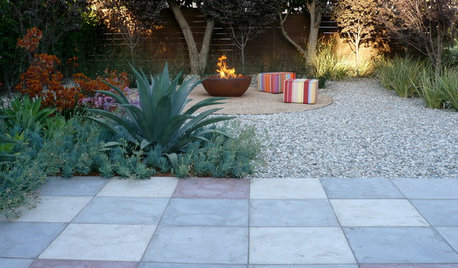
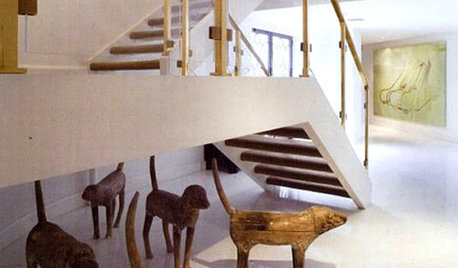

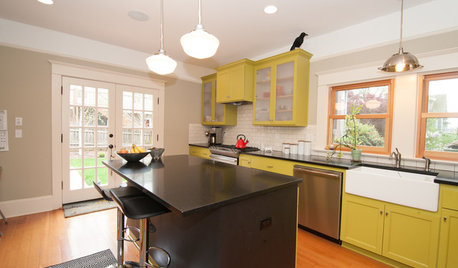
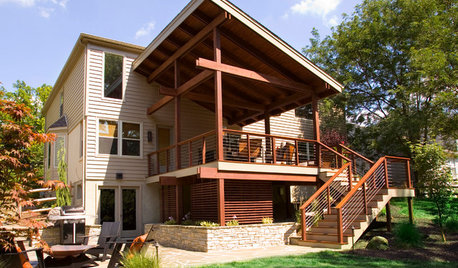

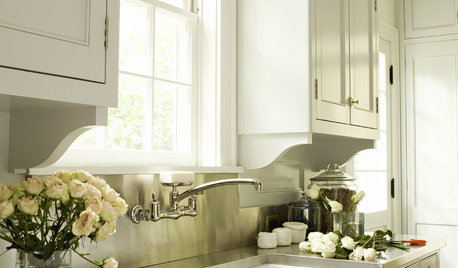


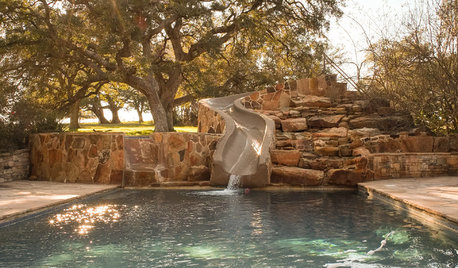






Got2btuf